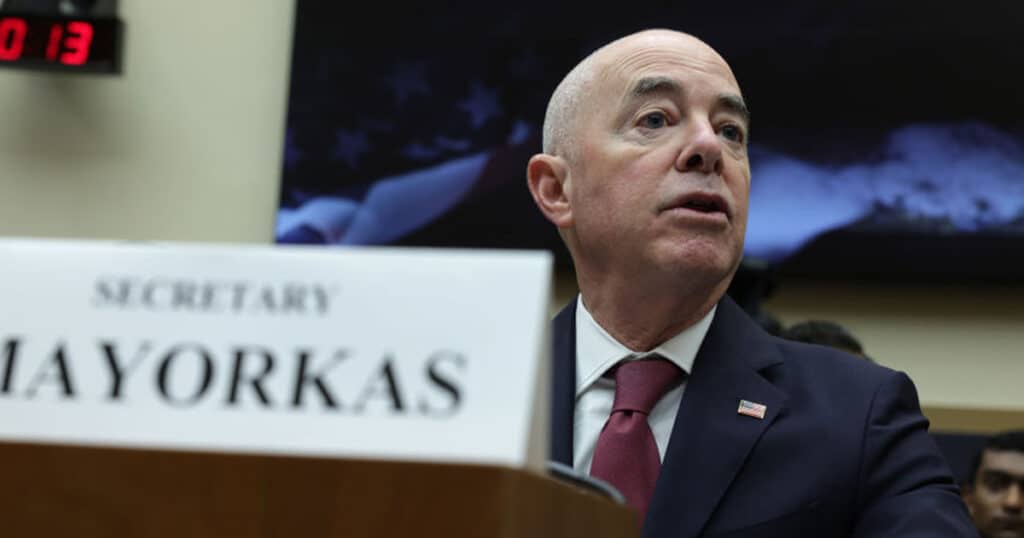
Inspector General: Vetting of asylum seekers is inadequate
The U.S. Department of Homeland Security must improve the screening and vetting process of noncitizens claiming asylum who are being released into the country, the department’s inspector general says in a new report.
The Office of the Inspector General evaluated the screening process being implemented by two DHS agencies: U.S. Customs and Border Protection screening foreign nationals arriving at land ports of entry and U.S. Citizenship and Immigration Services (USCIS) screening asylum seekers. The OIG audited the effectiveness of the technology, procedures, and other processes used to screen and vet asylum seekers. It concluded they “were not fully effective to screen and vet noncitizens applying for admission into the United States or asylum seekers whose asylum applications were pending for an extended period.”
Although CBP agents are using new technology, they “could not access all Federal data necessary to enable complete screening and vetting of noncitizens seeking admission into the United States,” the report found.
Current technological issues stemming from merging two data systems over four years ago has resulted in agents still not being able to query a person’s biometric information directly from one system from another. Ongoing technical limitations have prevented CBP agents from accessing certain data and impeded data-sharing capabilities since 2020, the report notes. As a result, the new technology is “unable to support CBP’s daily average of 360,000 IDENT search transactions.”
In an effort to improve access to data, the Department of Defense provided hard drives containing bulk data exports to CBP to upload in its system. A multi-year reconciliation effort appears to have failed. DHS attempted to ingest nearly 2.6 million records but as of May 2023, only 10% had been ingested.
The report also notes that CBP agents at land ports of entry also used “varied and sometimes inconsistent inspection procedures for travelers arriving in vehicles” and “do not have the technology to perform biometric matching on travelers arriving in vehicles.”
CBP claims it’s unable to fully implement biometric facial recognition technology at land POEs due to a lack of funding even though in 2016, Congress allocated up to $1 billion to fund the overall Biometric Entry-Exit Program, the report notes.
As a result, “without capabilities to effectively screen and vet noncitizens, CBP is unable to conduct complete screening and vetting of all noncitizen travelers at air and land ports of entry,” the OIG concluded.
Despite DHS Secretary Alejandro Mayorkas claiming for years that everyone applying for asylum and being released into the country has been “thoroughly vetted,” the OIG report, citing DHS data, contradicts this claim.
The USCIS is required to screen and vet everyone claiming asylum, including verifying their identity and determining their eligibility. The audit found that USCIS “only completed initial screenings for all applicants and then did not screen most applicants again until they were scheduled for an asylum interview,” which in many cases occurred years later.
“This means that, in the interim years, USCIS did not continuously screen applicants to identify persons who committed crimes or should otherwise have been considered a potential threat while residing in the United States without permanent legal status,” the report found.
The OIG analysis of affirmative asylum applications filed between October 2017 and March 2023 found that 20,221 applicants who received a favorable initial screening generated a hit in a subsequent security screening.
“Without a dedicated technology capability and resources to conduct interim screenings, USCIS may not promptly identify asylum seekers with derogatory information who remain in the country for extended periods of time while awaiting an asylum decision,” the report found. Derogatory information nearly always confirms the applicant is inadmissible, officials have explained to The Center Square, meaning they would be processed for removal. Under the previous administration, the majority of those claiming asylum would have been required to remain in Mexico and likely would not have been released into the country until their application was approved.
Until DHS addresses these challenges, it “will remain at risk of admitting dangerous persons into the country or enabling asylum seekers who may pose significant threats to public safety and national security to continue to reside in the United States,” the OIG report states.
The OIG issued five recommendations for DHS to implement, which it says it agreed to do.


